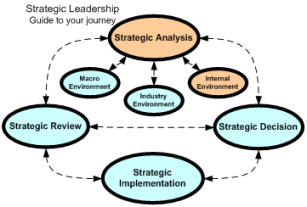- Home
Site Blog
Strategy
Managing Performance
Leadership
|
Internal Analysis Resources

For those completing an internal analysis this page provides you with more detailed on your organizations resources.
In manufacturing resources can be viewed as inputs into your businesses production processes, this might include capital equipment, the skills of your managers and employees, finance or even patents.
In a service organization your resources could be anything from your businesses assets to customer and employee goodwill. Resources can be divided into tangible and intangible resources; - Tangible resources: which are assets that can be seen, touched and/or quantified, tangible resources include;
- Financial Resources including;
Your businesses capacity to borrow funds to support your business initiatives, or
Your businesses ability to generate finds internally - Physical Resources including;
The sophistication and/or age of your businesses plant and equipment including your software systems, and
Your businesses access to raw materials including proximity to raw materials and/or customers
- Human Resources including;
Employee Loyalty
Training, experience, education and judgment of managers
Flexibility and adaptability of employees
- Organizational Resources including
Your businesses formal planning, controlling and coordinating systems
Your businesses formal reporting structure
- Intangible resources: are less visible and range from intellectual property rights to culture and reputation
- Reputation including
Reputation with suppliers for pursuing a mutually beneficial relationship, for paying on time and working together
Reputation with customers or brand name for quality, reliability and fitness for purpose
- Technological Resources including
The knowledge required to apply your technology or you have employees who are able to apply any leading edge technology you own to practical applications
The ownership of patents, brand names, copy rights
Internal Analysis – Value Proposition
What makes a good leader is the ability to identify those resources that have strategic value to your organization.
For example you may have 32 company cars in your business, which would technically be a physical resource but if they hold no strategic value you don’t need to list them in your internal analysis. You need to focus on the critical strategic resources rather than clutter your analysis with the merely important or interesting resources. (You may own the patent for the design of a beta video recorder – this is unlikely to be a strategic asset)
What makes a good leader tip: The longer and more detailed your analysis the less likely you are to create a meaningful strategic plan based on that analysis and even then you only have a 20% probability of implementing the actions.
Example Value Propositions
When I first started to study I made the assumption that the art of a value proposition is in skilled phrasing – but the more I researched the more I found that the art of a good value proposition is in it simplicity, here are a few that I have found
- Advanced research capabilities
- Extensive application of knowledge
- Efficient production of small electric motors
- Rapid product innovations
- Extensive training programs
Return to top
Back to the Internal Analysis Value Proposition Resource Model
Whatmakesagoodleader.com – Site Links
Strategic Planning Center
Macro Environment Analysis
Industry Environment Analysis
Management by Walking Around
|
| |



